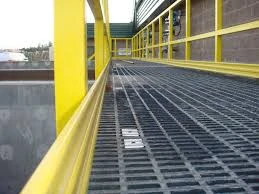
-
 Afrikaans
Afrikaans -
 Albanian
Albanian -
 Amharic
Amharic -
 Arabic
Arabic -
 Armenian
Armenian -
 Azerbaijani
Azerbaijani -
 Basque
Basque -
 Belarusian
Belarusian -
 Bengali
Bengali -
 Bosnian
Bosnian -
 Bulgarian
Bulgarian -
 Catalan
Catalan -
 Cebuano
Cebuano -
 China
China -
 China (Taiwan)
China (Taiwan) -
 Corsican
Corsican -
 Croatian
Croatian -
 Czech
Czech -
 Danish
Danish -
 Dutch
Dutch -
 English
English -
 Esperanto
Esperanto -
 Estonian
Estonian -
 Finnish
Finnish -
 French
French -
 Frisian
Frisian -
 Galician
Galician -
 Georgian
Georgian -
 German
German -
 Greek
Greek -
 Gujarati
Gujarati -
 Haitian Creole
Haitian Creole -
 hausa
hausa -
 hawaiian
hawaiian -
 Hebrew
Hebrew -
 Hindi
Hindi -
 Miao
Miao -
 Hungarian
Hungarian -
 Icelandic
Icelandic -
 igbo
igbo -
 Indonesian
Indonesian -
 irish
irish -
 Italian
Italian -
 Japanese
Japanese -
 Javanese
Javanese -
 Kannada
Kannada -
 kazakh
kazakh -
 Khmer
Khmer -
 Rwandese
Rwandese -
 Korean
Korean -
 Kurdish
Kurdish -
 Kyrgyz
Kyrgyz -
 Lao
Lao -
 Latin
Latin -
 Latvian
Latvian -
 Lithuanian
Lithuanian -
 Luxembourgish
Luxembourgish -
 Macedonian
Macedonian -
 Malgashi
Malgashi -
 Malay
Malay -
 Malayalam
Malayalam -
 Maltese
Maltese -
 Maori
Maori -
 Marathi
Marathi -
 Mongolian
Mongolian -
 Myanmar
Myanmar -
 Nepali
Nepali -
 Norwegian
Norwegian -
 Norwegian
Norwegian -
 Occitan
Occitan -
 Pashto
Pashto -
 Persian
Persian -
 Polish
Polish -
 Portuguese
Portuguese -
 Punjabi
Punjabi -
 Romanian
Romanian -
 Russian
Russian -
 Samoan
Samoan -
 Scottish Gaelic
Scottish Gaelic -
 Serbian
Serbian -
 Sesotho
Sesotho -
 Shona
Shona -
 Sindhi
Sindhi -
 Sinhala
Sinhala -
 Slovak
Slovak -
 Slovenian
Slovenian -
 Somali
Somali -
 Spanish
Spanish -
 Sundanese
Sundanese -
 Swahili
Swahili -
 Swedish
Swedish -
 Tagalog
Tagalog -
 Tajik
Tajik -
 Tamil
Tamil -
 Tatar
Tatar -
 Telugu
Telugu -
 Thai
Thai -
 Turkish
Turkish -
 Turkmen
Turkmen -
 Ukrainian
Ukrainian -
 Urdu
Urdu -
 Uighur
Uighur -
 Uzbek
Uzbek -
 Vietnamese
Vietnamese -
 Welsh
Welsh -
 Bantu
Bantu -
 Yiddish
Yiddish -
 Yoruba
Yoruba -
 Zulu
Zulu
fiberglass reinforced plastic pipe
Fiberglass Reinforced Plastic Pipe A Comprehensive Overview
Fiberglass Reinforced Plastic (FRP) pipe is increasingly becoming a favored solution in numerous industries due to its unique properties and advantages over traditional materials such as metal and concrete. FRP pipes are made by combining fiberglass reinforcement with a plastic matrix, resulting in a product that is both lightweight and highly durable. This article explores the benefits, applications, and future of FRP pipes.
One of the most significant advantages of FRP pipes is their outstanding corrosion resistance. Unlike metal pipes that are susceptible to rust and oxidation, FRP pipes can withstand harsh chemicals and environmental conditions, making them ideal for industries such as chemical processing, wastewater treatment, and oil and gas. This resistance extends the lifespan of the pipes, reduces maintenance costs, and minimizes the need for replacements. Furthermore, FRP pipes are non-conductive, which can prevent issues related to galvanic corrosion when used with metal fixtures.
Fiberglass Reinforced Plastic Pipe A Comprehensive Overview
Thermal insulation is another major benefit of FRP pipes. The low thermal conductivity of plastic materials provides excellent insulation, reducing energy losses in systems that transport hot or cold fluids. This can lead to improved energy efficiency and lower operational costs in thermal management applications.
fiberglass reinforced plastic pipe

A crucial consideration in the use of FRP pipes is their performance under pressure. High-quality FRP pipes are engineered to withstand high-pressure environments, making them suitable for a range of applications including HVAC systems, irrigation, and chemical transport. Additionally, advancements in manufacturing techniques have improved the overall strength and reliability of these pipes, further broadening their applicability.
The environmental impact of using FRP pipes is also a compelling advantage. The manufacturing process of FRP materials can be less energy-intensive compared to the production of metals. Moreover, the longevity and recyclability of FRP materials contribute to a reduced environmental footprint over the life cycle of the products.
As industries continue to seek sustainable and efficient solutions, the demand for FRP pipes is poised to grow. Innovations in composite materials and manufacturing processes promise to enhance the performance characteristics of FRP pipes even further. Research is ongoing into developing even more resilient and environmentally friendly formulations, which will likely expand the scope of FRP pipe applications.
In conclusion, Fiberglass Reinforced Plastic pipes represent a significant advancement in piping technology. Their corrosion resistance, lightweight nature, thermal insulating properties, and overall durability make them suitable for diverse applications across multiple industries. As technology evolves and environmental considerations become increasingly paramount, FRP pipes are set to play a crucial role in the future of infrastructure development, contributing to more sustainable practices and innovative solutions. Whether in construction, wastewater management, or chemical transport, FRP pipes are undoubtedly a smart choice for modern piping systems.
Latest news
-
Exploring the Benefits of Top Hammer Drifter Rods for Enhanced Drilling PerformanceNewsJun.10,2025
-
High-Precision Fiberglass Winding Machine for GRP/FRP Pipe Production – Reliable & Efficient SolutionsNewsJun.10,2025
-
FRP Pipes & Fittings for Shipbuilding - Corrosion-Resistant & LightweightNewsJun.09,2025
-
Premium FRP Flooring Solutions Durable & Slip-ResistantNewsJun.09,2025
-
Premium Fiberglass Rectangular Tanks Durable & Lightweight SolutionNewsJun.09,2025
-
Tapered Drill String Design Guide Durable Performance & UsesNewsJun.09,2025









